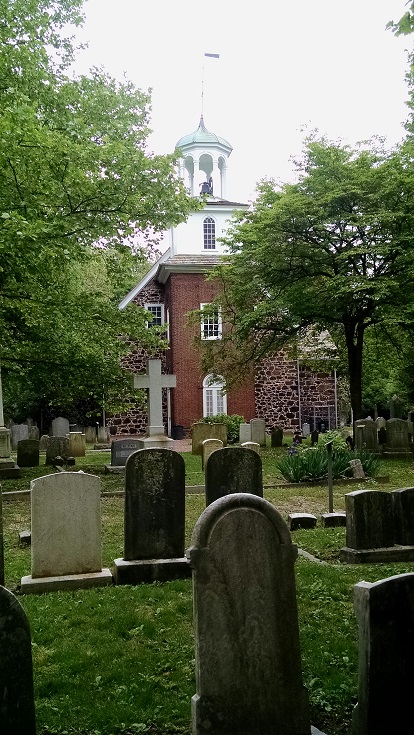Welcome to New Sweden
Would you believe that I live, work and play in Sweden? Or, rather, what used to be Sweden? That’s right – the Kingdom of Sweden once laid claim to a part of the east coast of North America, back in the colonial era before England snatched it all up. It was established in the lower Delaware Valley, in what would today be called the tri-state area. The sites of what are now Wilmington, DE and Philadelphia, PA are included in the former colony.

There’s even a famous ship involved in the founding, akin to the Mayflower that legendarily landed at Plymouth Rock. The Swedish ship was called the Kalmar Nyckel, and it came to North America with Swedish colonists in 1638. The settlement they founded was Fort Christina, named after the Queen of Sweden. There’s a replica of the ship that plies the former waters of New Sweden for the benefit of tourists, and I sometimes see it when I am at work in Wilmington. But all that remains of the fort is a marker.

There is a little bit left of the old colony of New Sweden in the urban landscape of the area, mainly in the form of three churches known as the Old Swedes Churches. There is one in Wilmington and two in Philadelphia. The one in Wilmington is a National Historic Park, and you can visit and get a tour for $5. When I went, the guide first wanted to know if I am of Swedish heritage, which I am not, because many Americans who are of Swedish extraction come to the church out of, I guess, genealogical curiosity. Then he showed me around the church and grounds, and told me a little history. It’s a remarkable site to visit, with its many very old graves, and original masonry dating from the late 1600s.
As the guide related it to me, the Europeans who first settled here weren’t in New Sweden for very long. The colony was ceded to the Dutch after a war and became part of New Netherland. But even that status was brief, as it all went to England in 1676. By then the Kalmar Nyckel had been sunk in battle. Now the people who lived here got along with their lives pretty well no matter who was officially in charge – it really didn’t matter to them which monarch on the other side of the Atlantic ocean ostensibly ruled them. Part of the logic, I suppose, of living in the New World, which eventually would lead to complete independence from European monarchy.
New Sweden is something of a very minor footnote in American history. The Dutch influence was actually greater in the early colonial era – I’m sure you know what old New York used to be called. And most Swedish-Americans today live in the midwest and descend from immigrants who came in the late 19th century. But I am reminded of the Old Swedes’ historical presence every time I cross Swedesford road, on the northern edge of the former colony of New Sweden. America’s old history remains faintly visible through its modern facade.
2 thoughts on “Welcome to New Sweden”
The largest influence New Sweden had on American culture was the importation of Finno-Swedes, who brought their cabin making skills with them. The “American” log cabin design and style comes from them.
yes! The famous log cabin, which we think of as an American icon of the early frontier.